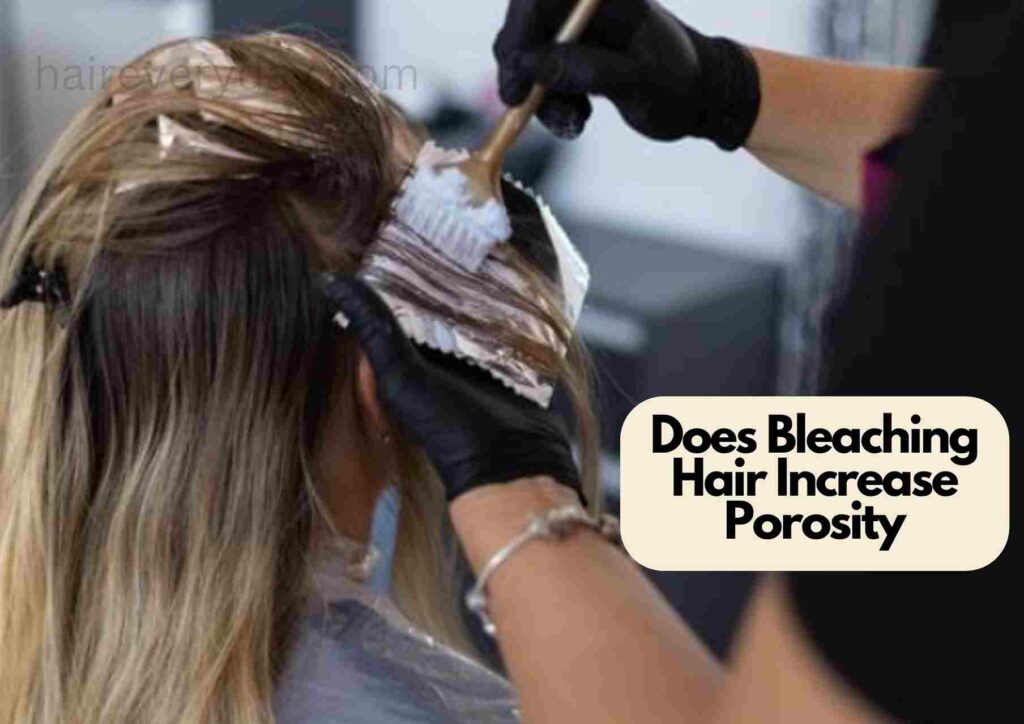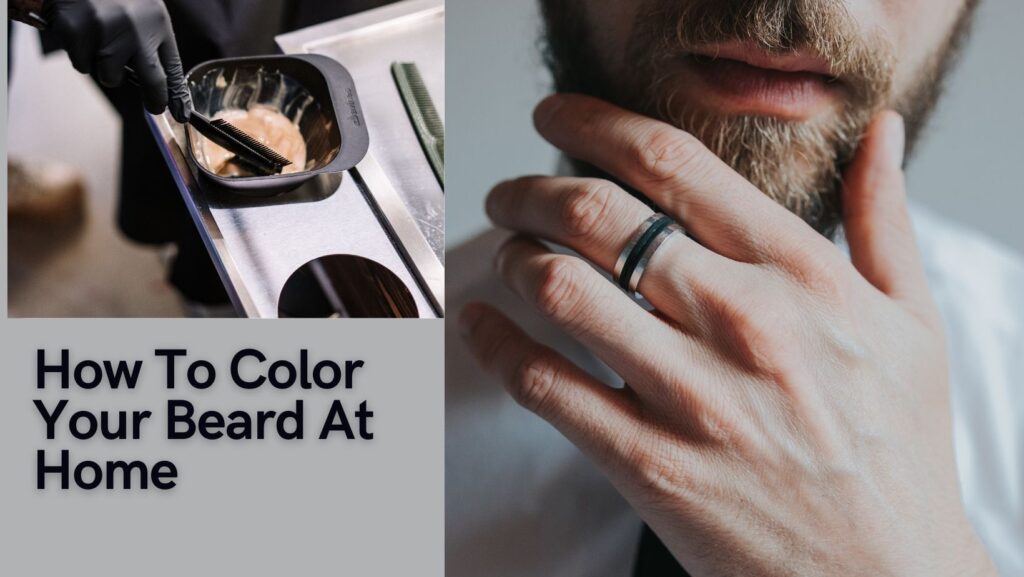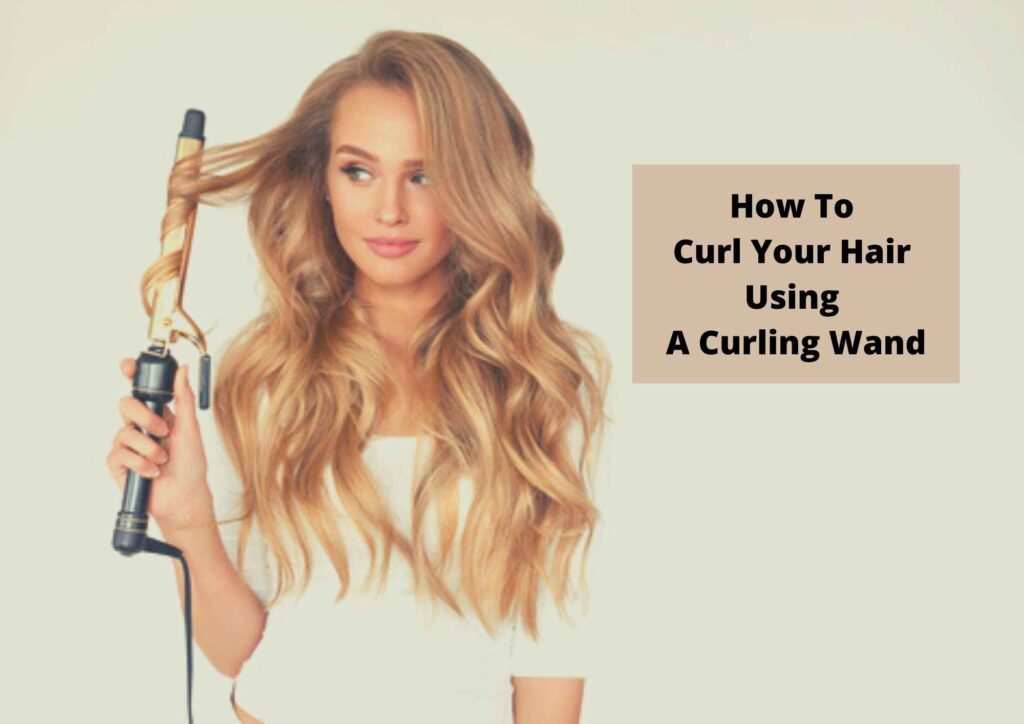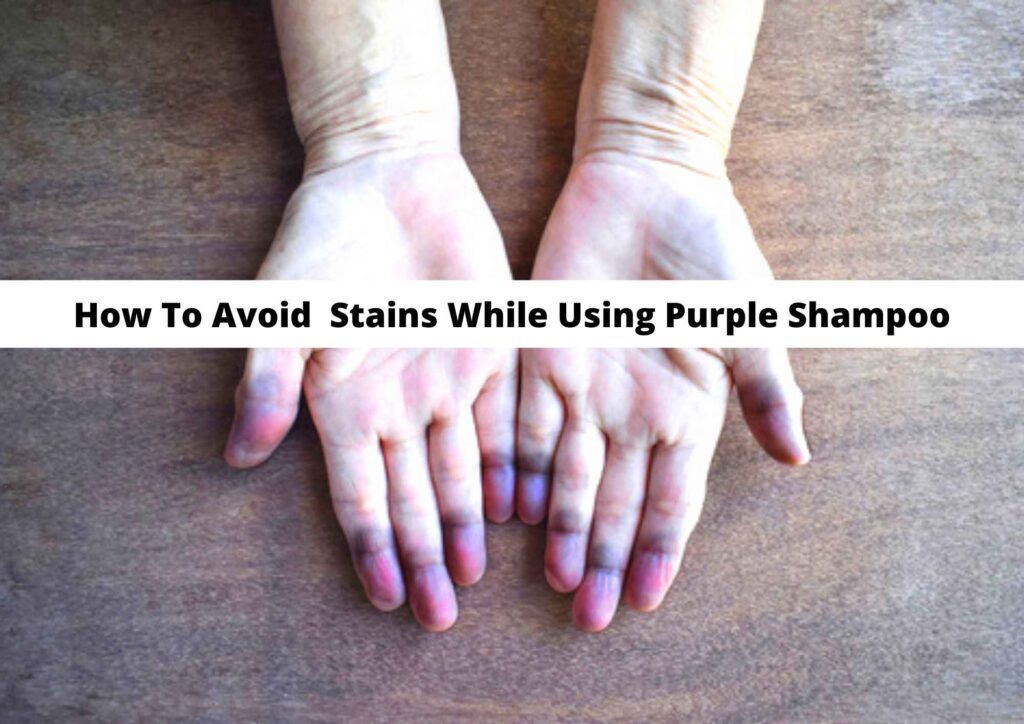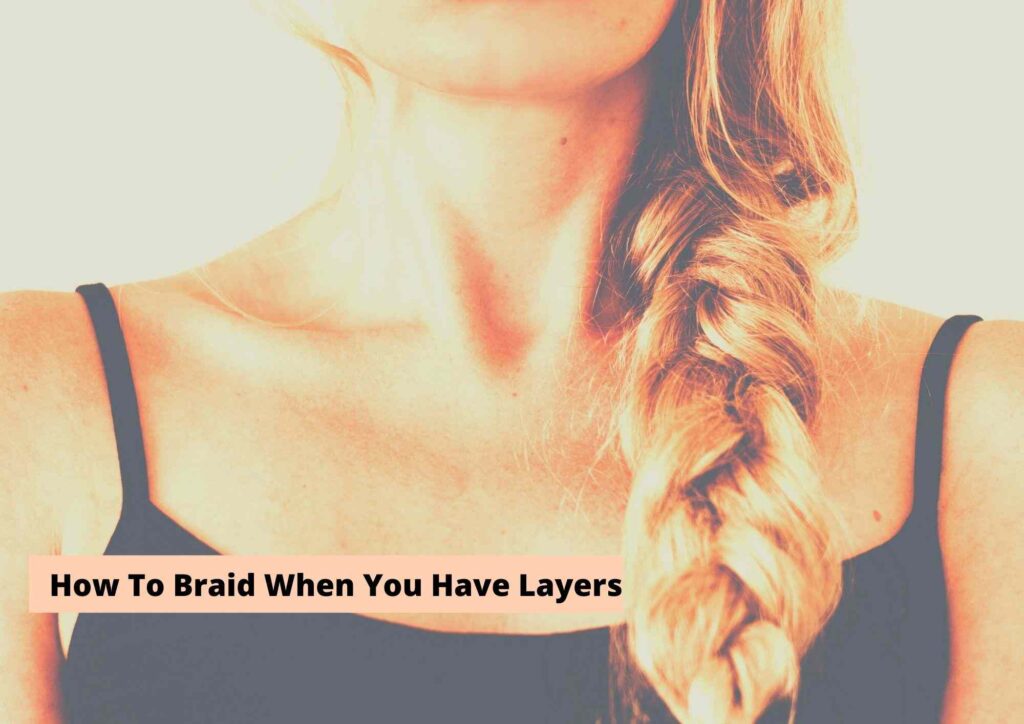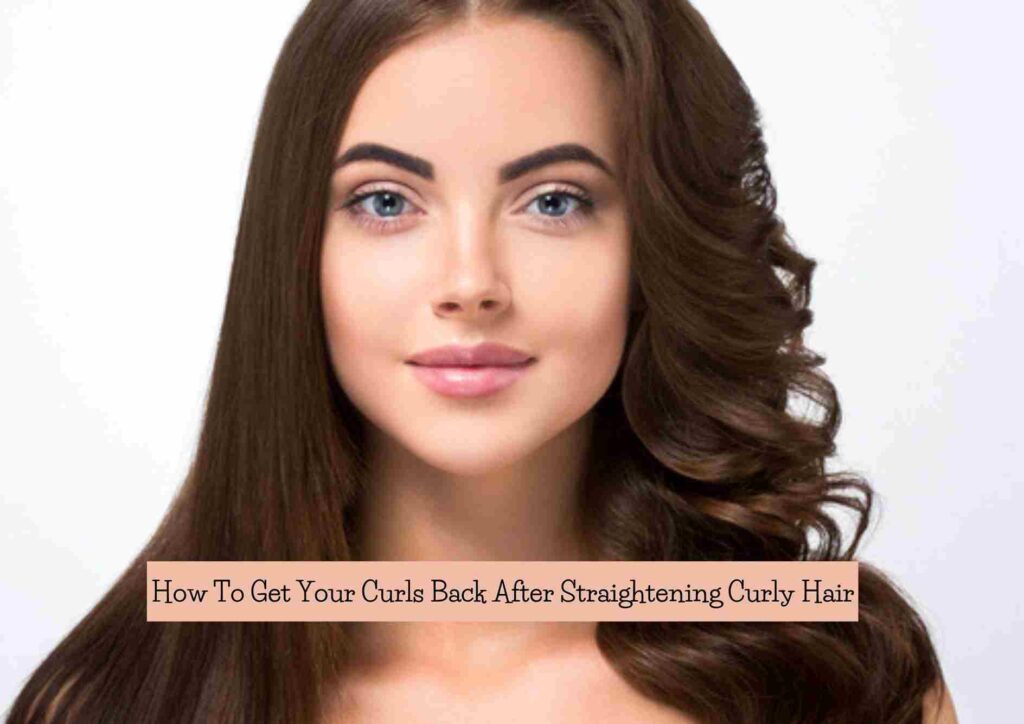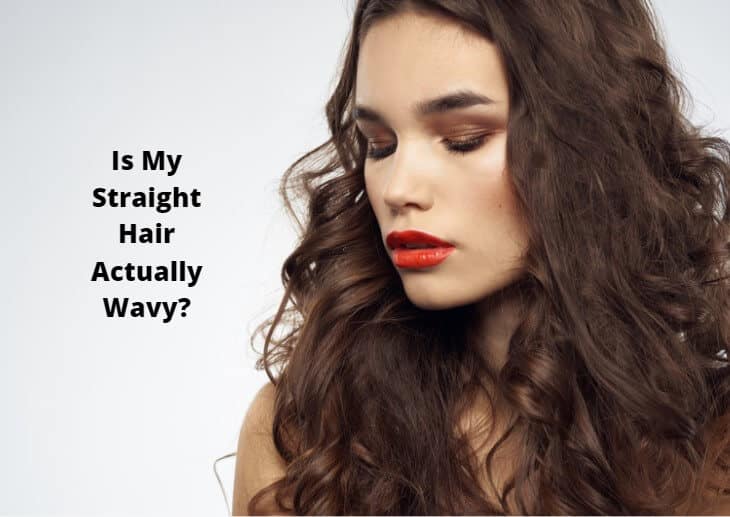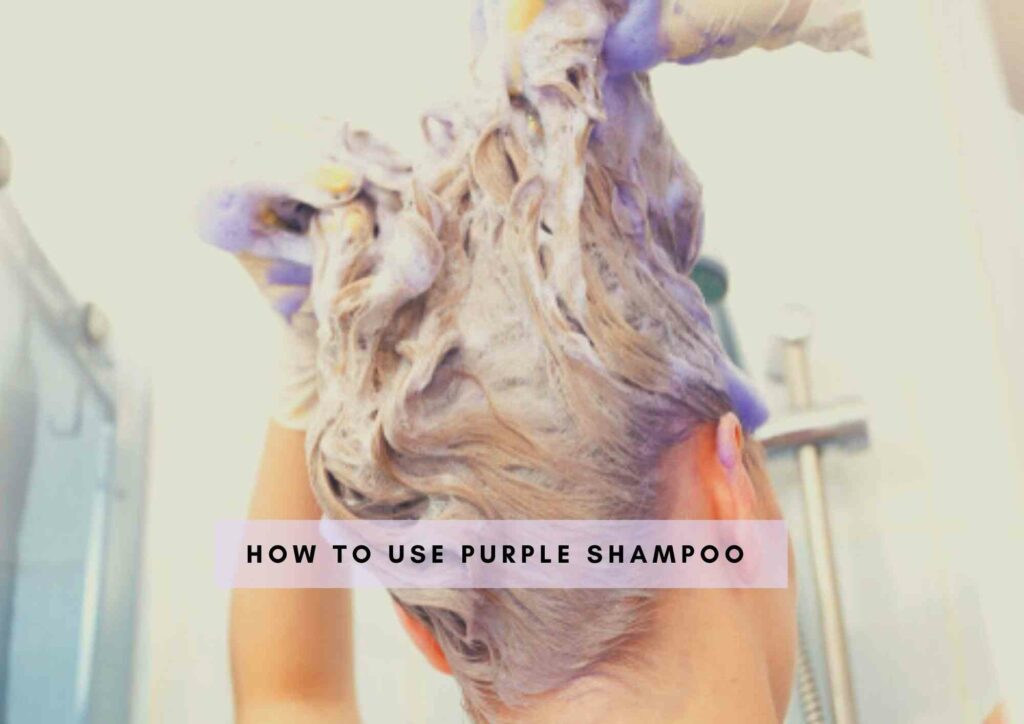Does Bleaching Hair Increase Porosity? If you want to know how to dye porous hair and if low porosity hair is harder to dye check out my article below.
In This Article:
- Does Bleaching Hair Increase Porosity?
- Does Hair Porosity Affect Hair Color Intake?
- What Are The Difficulties With Dyeing Low Porosity Hair
- How Can I Bleach High Porosity Hair Without Damaging It
- Why You Should Trust Us?
When I was working as a stylist I always told my clients ‘if ever considered bleaching your hair, it’s important to know what you’re getting into.”
While bleaching can help you achieve a lighter look, it may also leave your hair feeling dry, brittle, and vulnerable. Increased porosity is one of the most significant potential impacts of bleaching. However, it’s often misunderstood.
That’s why in this article, I will dive deep into the science behind porosity and investigate whether or not bleaching your hair is worth the potential side effects.
Does Bleaching Hair Increase Porosity?

Bleaching your hair may seem like a fun and exciting way to switch things up in your hair game, but it’s important to understand the potential consequences. One of the most significant concerns for those considering going blonde is the increase in porosity that can occur.
Porosity is how easily your hair absorbs and retains moisture, and when your hair is bleached, it can become more porous. This means that it can be more prone to breakage and damage, as well as being able to absorb more moisture, both good and bad.
When your hair is more porous, it can take longer to dry and be more susceptible to frizz, especially in humid conditions. However, it also means that it can absorb more of the nutrients and products you apply to it, making it more effective.
If you’re concerned about the effect that bleaching your hair may have on its porosity, it’s essential to take proper care of your locks. Ensure that you use quality hair care products, including a deep conditioning treatment once or twice a week, to help maintain moisture levels and strengthen your hair.
In conclusion, bleaching your hair can increase hair porosity, making it more prone to breakage and damage, as well as frizz in humid conditions. (Imai T. The influence of hair bleach on the ultrastructure of human hair with special reference to hair damage. Okajimas Folia Anat Jpn. 2011 May;88(1):1-9. doi: 10.2535/ofaj.88.1. PMID: 21882590.)
However, if you practice proper hair care, you can keep your hair healthy and beautiful, no matter what color it is.
Does Hair Porosity Affect Hair Color Intake?
High porosity hair is actually easier to dye than low porosity hair. This is because when hair is highly porous, it absorbs color more readily and evenly. The hair cuticle is open and ready to accept the color molecules, resulting in a more vibrant and longer-lasting color.
It all comes down to the structural integrity of the hair. When hair is healthy, the cuticle lies flat, protecting the inner cortex from damage and preventing moisture loss.
However, when the cuticle is damaged or missing, as in the case of highly porous hair, the inner cortex becomes exposed and vulnerable. This allows color molecules to penetrate deeply into the hair shaft, resulting in a more pigmented and saturated color.
Of course, this doesn’t mean that you should aim to increase your hair’s porosity just to make it easier to dye. Bleaching and other chemical treatments can cause irreversible damage to the hair, making it brittle, frizzy, and impossible to manage.
What Are The Difficulties With Dyeing Low Porosity Hair
Dyeing low porosity hair can be quite a challenging task. For those of us who possess this type of hair, we know all too well the struggle of getting our hair to take color. Low porosity hair has tightly compacted cuticles, making it difficult for the dye to penetrate through and evenly distribute.
When dyeing low porosity hair, the dye tends to sit on the surface of the hair, resulting in an uneven and patchy look. It’s frustrating to spend hours dyeing our hair only to end up with a less than satisfactory result.
Moreover, low porosity hair also tends to take longer to absorb moisture, so the dye may take longer to fully process and develop. This can cause the color to fade out quickly, leaving us with a blotchy appearance.

Another issue with dyeing low porosity hair is that the dye can strip the hair of its natural oils and moisture. This can result in dry and brittle hair that is more prone to breakage.
I always used to properly prep my clients’ hair before dyeing it. Clarifying shampoos and hot oil treatments can help open up the cuticles and restore the hair’s natural oils. I also used a good quality hair dye specifically formulated for low porosity hair can help achieve a more even and long-lasting color.
How Can I Bleach High Porosity Hair Without Damaging It
If you are someone who has high porosity hair, you know the struggle of keeping it healthy and manageable. Bleaching hair can only make the situation worse if not done properly.
However, you don’t have to give up your dream of having a fabulous blonde mane to avoid hair damage and breakage. Here are some tips on how you can bleach high porosity hair without causing further harm.
First and foremost, it is crucial to prepare your hair and strengthen it before bleaching. Use a protein treatment to help fortify your hair cuticles and reduce porosity. This will help to prepare your hair for the harsh chemicals that are found in bleach products.
When bleaching, make sure that you do not leave the bleach on for too long. As high porosity hair is prone to damage, leaving bleach on for more than the recommended time can lead to breakage and more damage. Also, be sure to use a gentle bleach powder that won’t be too harsh for your hair.
After bleaching, make sure to follow up with a deep conditioning treatment that’s designed to restore moisture levels in your hair. This will help you to repair any damage that may have occurred during the bleaching process. During the next few weeks, use a leave-in conditioner to help your hair retain moisture.
In conclusion, bleaching high porosity hair doesn’t have to be scary and damaging. With the right preparation, gentle bleach powder, and a restorative conditioning regime, you can achieve your desired hair color without worry. So, what are you waiting for? Start preparing for your gorgeous new blonde locks today!
Why You Should Trust Us?
The author of this article, Leah Marie Priest has a degree in Cosmetology with years of experience in dealing with hair care, scalp care, and hairstyling. As someone who extensively deals with all kinds of hair textures, products, styling methods and more, hair Leah Marie knows what kind of products and procedures suit each hair type and person. We have also tested these hair products and processes ourselves to provide you an unbiased review about every product. Each of our articles are also reviewed by a team of medical professionals so that you get the most accurate and expert-reviewed information.
In conclusion, if you’re considering bleaching your hair, you should be aware of the risks involved and take extra care to protect your locks.
Use hair masks or leave-in conditioners to nourish the hair, avoid using heat styling tools whenever possible, and always cover your hair when out in the sun.
Remember that healthy hair is beautiful hair, and it’s essential to take care of it to keep it looking its best.
Why You Should Trust Haireveryday?
The author of this article, Leah Marie Priest has a degree in Cosmetology with years of experience in dealing with hair care, scalp care, and hairstyling. As someone who extensively deals with all kinds of hair textures, products, styling methods and more, hair Leah Marie knows what kind of products and procedures suit each hair type and person. We have also tested these hair products and processes ourselves to provide you an unbiased review about every product. Each of our articles are also reviewed by a team of medical professionals so that you get the most accurate and expert-reviewed information.
Also Read:
Are Cantu Products Good For Low Porosity Hair
Are Hot Oil Treatments Good For Low Porosity Hair
Is Mafura Oil Good For Low Porosity Hair
Is Rice Water Good For Low Porosity Hair
Is Shea Moisture Coconut And Hibiscus Good For Low Porosity Hair
To Summarize

